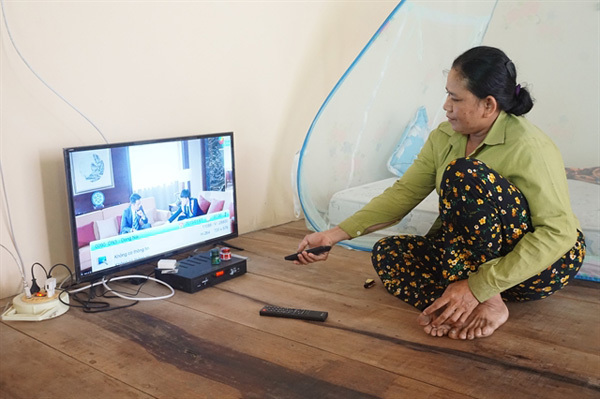 |
| Solar power can be used to produce electricity for household's use in An Giang Province. — VNS Photos Tin Nguyen |
Sot doesn’t have a job and together with her children, aged between two and 10, has to live on VND2 million (US$87) her husband sends back every month.
Her mobile phone is the only way the young mother can keep in touch with her husband. Living in an off-grid area in An Tuc where houses are located sparsely, she fears most her phone will run out of battery in the middle of the night when she needed to make a call.
In most parts of Vietnam where reliable supply of electricity is taken for granted, people can charge their phone almost anywhere, anytime, whether at home, supermarkets or restaurants.
But for Sot, this means that she would have to make a short walk to her relative’s house to charge the phone.
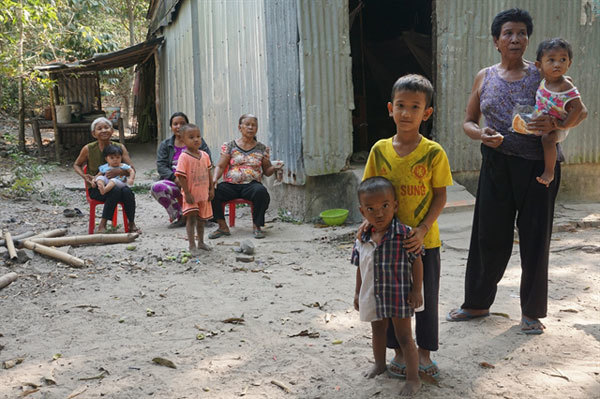 |
| Néang Sốt (second, left) sits with her neighbours in An Tuc Commune. Most men and young people have left the commune to look for jobs. |
In recent years, Vietnam has experienced a renewable energy boom but off-grid communities are still too remote to benefit.
According to the state-owned Vietnam Power Group, the total installed capacity of solar power in Vietnam has reached 19,400 MWp, accounting for about 25 per cent of the total installed capacity of the national power system.
The total solar power generation output in 2020 alone was 10.6 billion kWh, accounting for about 4.3 per cent of the total electricity output of the national power system.
The Ministry of Industry and Trade set the target to provide 21,000 households with electricity from renewable energy in 2016-2020, however, the target fell short with only 617 households having access to solar electricity under the ministry’s scheme as of 2020.
“The investment for renewable energy is much lower than for grid and suitable for areas where locals use a small amount of electricity,” said Luu Tung Giang, deputy head of the Division of Grid and Rural Electricity under the Ministry of Industry and Trade.
However there are difficulties in managing the panels if these are installed in rural areas, using state funds, he said, adding that these will be treated as state property and managed by the local commune or district. Meanwhile, there isn’t any policy related to this, he said.
While the authorities are still struggling with the management scheme, as many as 871,263 households in 2,197 communes across Vietnam live either without electricity or with a disrupted, unstable source of power.
Aware that it will take a long time and an unaffordable sum of money to have the grid in this remote, sparsely populated area, Sot spent VND1.5 million ($65) to buy a solar panel last year.
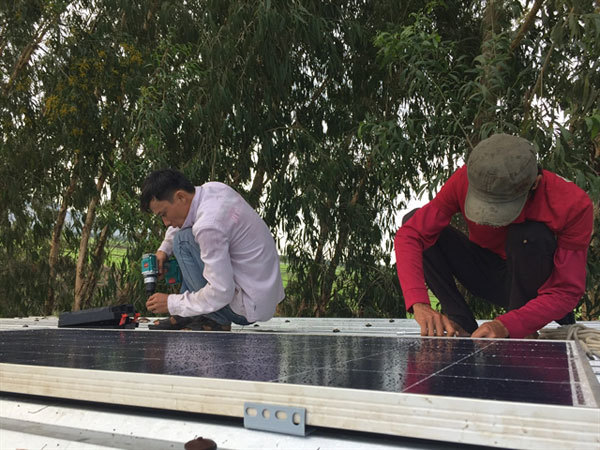 |
| A local NGO has helped more than 500 households in two districts of Tinh Bien and Tri Ton have access to solar energy. |
She said: “Solar energy has made my life a lot easier. Before we could hardly do anything under the dim light of kerosene lamps at night, but now everything is more convenient with electricity,”
Just last year, Sot still had to cycle a few kilometres on dirt road to buy kerosene as fuel for lighting.
Now her family doesn’t have to put up with the petroleum-like odour of kerosene and she can spend the night time playing with her kids, help the eldest daughter with homework, surf the Internet and have video calls with her husband.
The initiative to bring solar energy panels to off-grid communities in An Giang is implemented by Green Innovation and Development Centre (GreenID), a Vietnamese non-for-profit organisation in cooperation with the province’s Department of Agriculture and Rural Development.
An Giang Province has an ideal condition for solar with a dry season lasting for five months and high solar radiation level.
With more than 450,000 Euros, mostly funded by Bread for the World, the project has been implemented in four communes of An Hao, Chau Lang, An Tuc and O Lam in the two districts of Tri Ton and Tinh Bien since 2019, according to Nguyen Thi Ha, project manager of GreenID.
These localities are chosen as the number of households living without electricity here is still high and they are mostly poor with average income of VND10-13 million ($435-565) a year, who can hardly afford the grid electricity, she said.
“Poor infrastructure and remote locations make grid electricity very expensive here," Ha said.
"Individual rooftop panels are a suitable solution. So our goal was to offer them a cheap model that can provide enough electricity for household’s use.”
In each commune, energy teams were created made up of local residents. These teams will help raise awareness about the benefits of solar panels, look for solar panel providers, install systems and carry out maintenance work.
Despite the COVID-19 pandemic, which delayed some of its activities and events, the project has achieved the target of providing solar panels for more than 500 households with the total capacity of 1,500kWp by the end of 2020.
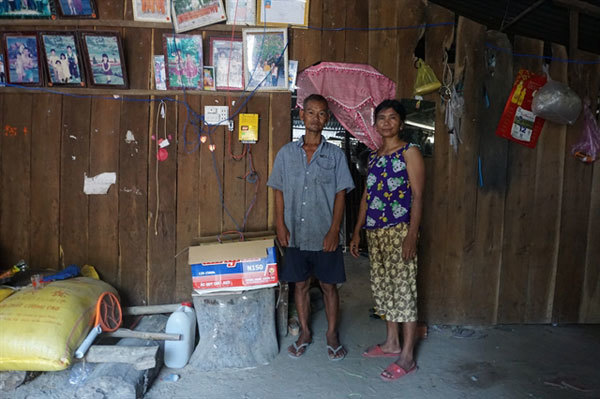 |
| Access to electricity is a fundamental step to reduce poverty in Tri Ton and Tinh Bien districts. |
A package of a PV system including a solar panel and a charger is sold at half price at VND1.5 million. Depending on families’ demand, locals will buy batteries to store the power for night time or rainy days.
37-year-old Tran Duc Anh in An Hao Commune used to travel 6km from his house to the township’s centre to charge the power generator almost every day.
A 25 amp generator took almost half a day to be fully charged so he had to bring the generator to the charging point in the morning, then go to work and come back to pick it up in the late afternoon.
“Sometimes, it was pouring and I didn’t feel like going out at all but there was no other choice,” said Anh, adding that a family of four now would have to spend VND200,000-300,000 ($9-13) a month for charging expenses if they do without electricity.
After installing 475w solar panels, his family now has access to a reliable, clean and cheap source of electricity for household’s use.
The father of two has bought a new television and more fans to cope with the scorching summer here.
“Providing electricity is a fundamental step in reducing poverty here in the long term,” said Néang Sa Rum, deputy chairwoman of An Tuc’s People’s Committee, adding that the cost to be connected with the electricity network ranges from VND6-10 million depending on different locations.
This seems to be unaffordable for people in these two districts who earn an average income of VND10-13 million ($435-565) a year.
Truong Kien Tho, vice director of An Giang’s Department of Agriculture and Rural Development told Việt Nam News: “It is hard to achieve the target of having all rural households connected with grid networks, especially in remote mountainous areas where people are sparsely populated. Solar is a perfect alternative in these areas.
"This project has profound impacts on the use of solar energy among ethnic minority communities in two mountainous districts of Tinh Bien and Tri Ton. It also has ripple effects to non-ethnic communities in other communes of the two districts,"
But he did say there are still 437 households living without electricity in An Giang as of 2020.
With positive results from the project in An Giang, GreenID’s project manager said she hoped to duplicate this initiative in other areas with similar conditions to create impacts for local communities.
For people like Duc Anh and Sot, this is the new chapter in their life and a hopeful future for their children.
“The solar brings light to our area and a better future for the young generation,” said Sot.
VNS
* This story was written & produced as part of a media skills development programme delivered by Thomson Reuters Foundation. The content is the sole responsibility of the author and the publisher.
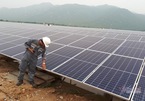
Rooftop solar power saw tremendous growth in 2020
Over 100,000 rooftop solar power works with total capacity of 9,300 MW were connected to the national grid by December 31, 2020.